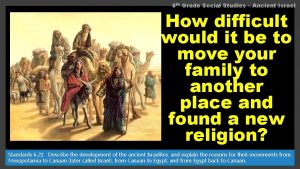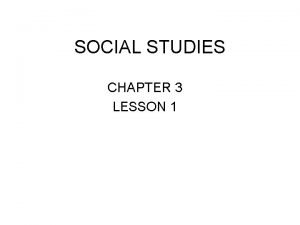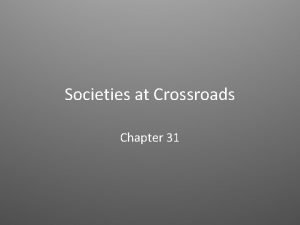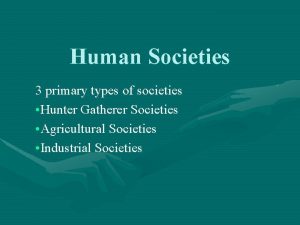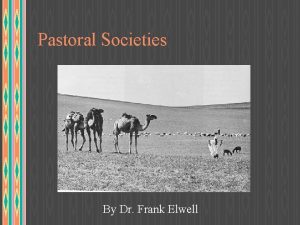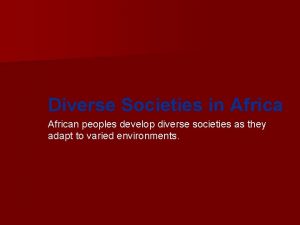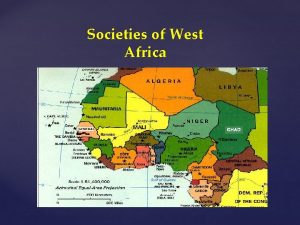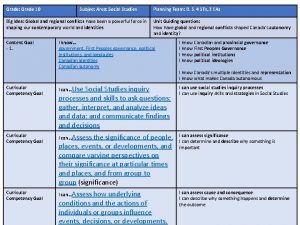Grade 6 Social Studies Development of Societies Chapter














- Slides: 14

Grade 6 Social Studies Development of Societies Chapter 5 Houghton Mifflin Social Studies

Features of a Civilization For a society to be a civilization, it must have 5 characteristics Stable food supply System of government Specialization of labor Social levels Development of culture

How did societies develop? Humans became food producers by domesticating animals and plants. Animals became a reliable food source People stayed in one place and developed settled communities

Neolithic Settlements Catal Huyuk Ain Mallaha Umm Dabaghiyah-small, not much farming, poor, dry soil, hunted donkey like animal called the onager All located in the Middle East

Catel Huyuk Neolithic settlement located in the Middle East Economy based on agriculture Chief crop was wheat, peas, crabapples, juniper berries, acorns, nuts & almonds. Raised cattle & hunted bears, deer & wolves

More facts on Catel Huyuk Approximately 100 mud houses, all the same size No streets, traveled from house to house by walking on each others roofs. Center for trade: traded obsidian (dark, shiny glass formed from volcanic ash)

City of Ur Located on dry plain between Tigris & Euphrates River used for irrigation, irrigation brought specialized labor, develop stable food supply & population growth Social levels & system of writing

What is agriculture? The science, art & business of raising animals & plants to supply food for humans All Neolithic farming settlements way of life practiced agriculture

Famine is a widespread shortage of food Hunter gatherers stored grain to prevent famine from occurring.

Irrigation is the act of supplying dry lands with water Irrigation helped early civilizations by bringing a stable food supply. Workers needed to irrigate the land, so it brought a specialization of labor.

Domestication To train or adapt an animal or plant to live in a human environment By domesticating plants and animals it made them more useful to humans.

Shrine A shrine is a sacred place of worship Catal Huyuk used obsidiian to create shrines. Catal Huyuk buried people in their homes, evidence of shrines found in homes, therefore they had a form of religion

Environment All the living & nonlivings things in a person’s surroundings Hunters-gatherers found plants and animals that were found naturally in the environment

More Key Terms Self-sufficient – being able to provide for oneself Surplus – an extra amount
 Grade 9 social studies chapter 3 test
Grade 9 social studies chapter 3 test Social studies chapter 2
Social studies chapter 2 What is living together in social studies
What is living together in social studies History grade 9 unit 5
History grade 9 unit 5 Worldviews grade 8 textbook
Worldviews grade 8 textbook Day 10 grade 8 social studies staar review
Day 10 grade 8 social studies staar review 6th grade social studies ancient israelites
6th grade social studies ancient israelites Grade 7 social studies empowerment
Grade 7 social studies empowerment 8th grade social studies
8th grade social studies 4th grade social studies vocabulary
4th grade social studies vocabulary Paradigm shift from women studies to gender studies
Paradigm shift from women studies to gender studies Guided reading activity lesson 2 human geography of mexico
Guided reading activity lesson 2 human geography of mexico Social studies chapter 3
Social studies chapter 3 Social studies chapter 3
Social studies chapter 3 Chapter 31 societies at crossroads
Chapter 31 societies at crossroads






